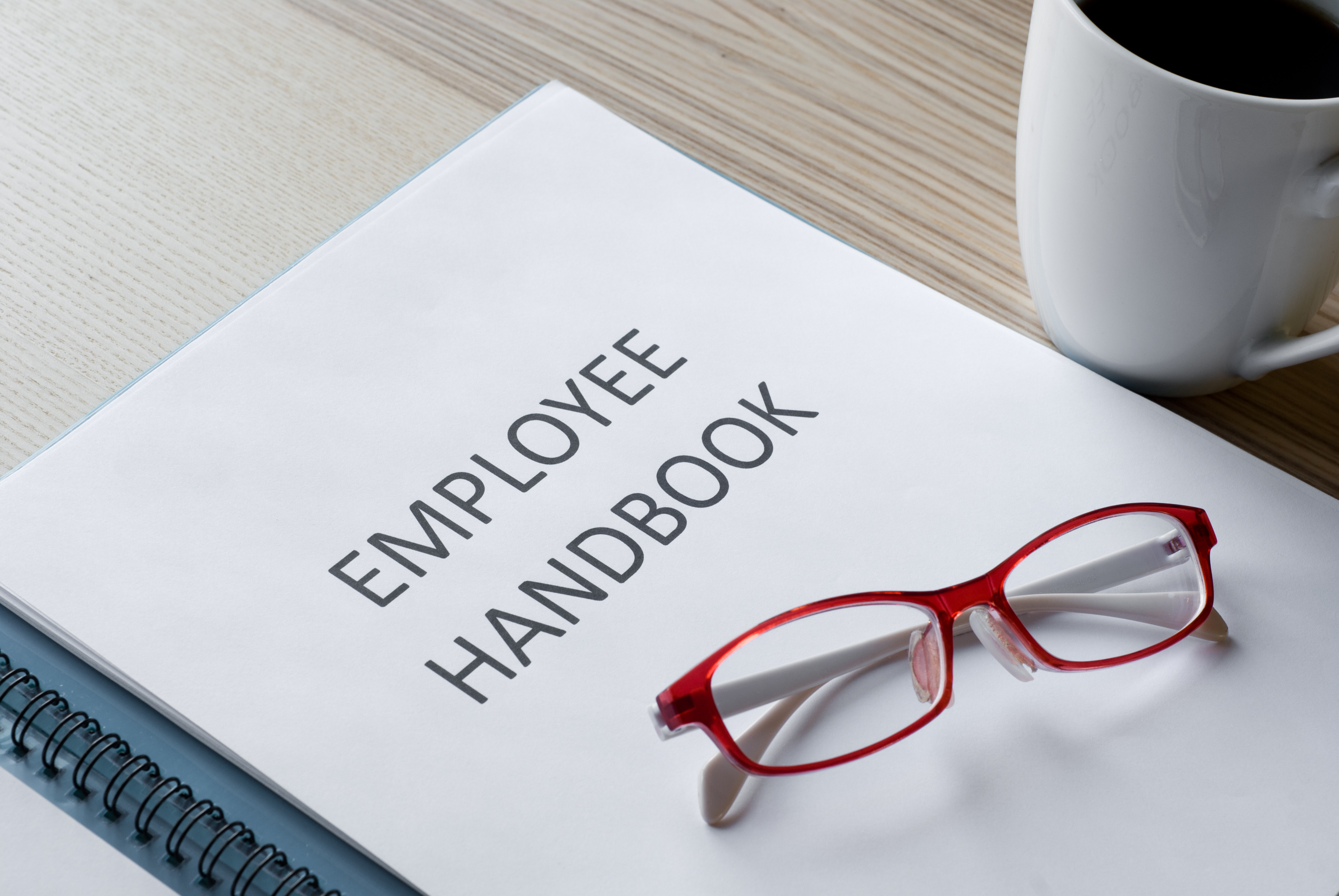Ordinarily, we think of the National Labor Relations Board (“NLRB” or the “Board”) as the agency that regulates workplaces in which employees are represented by labor unions. However, in recent years, the NLRB has made it clear that the rules prohibiting employers from interfering with employee rights that are guaranteed under the National Labor Relations Act – even when there is no union involvement – apply to all employers and all employees. These protected rights include the right to engage in “concerted activities:” the right to get together to address workplace issues. Rules set forth in Employee Handbooks have often been challenged by employees as interfering with their rights under the National Labor Relations Act.
The NLRB’s recent set of decisions addressing certain Employee Handbook policies is illustrative of the current Board’s different—and more employer-friendly—perspective on the issue when compared to its Obama-era counterpart. While the new legal framework, which is, in effect, a balancing test, dates back almost three years, the long-term implications of these decisions for employers and employees alike are only now becoming apparent.
The controlling legal framework originated out of the NLRB’s December 2017 decision in The Boeing Company and Society of Professional Engineering Employees in Aerospace case. In Boeing Co., the NLRB overturned the Obama-era Board’s precedent in favor of a new balancing test, when presented with a challenge to the legality of an employer’s Employee Handbook policy under the NLRA. It held that, when looking at a policy or rule that appears to be neutral on its face, such as a provision that requires employees to keep certain information (such as their rate of pay) confidential, the appropriate analysis in these contexts is to consider the “nature and extent” of the policy at issue’s “potential impact on NLRA rights” as well as the “legitimate justifications associated with the rule.” In Boeing Co., the Board also set out three different categories under which employer policies would be classified in light of the relevant balancing test: (1) policies that are legal in all cases; (2) policies that are legal in some cases depending on their application; and (3) policies that are always illegal.
When applying this Boeing Co. framework in recent months, the NLRB has reached a series of results which are in stark contrast to similar decisions by the Obama-era Board as to the legality of various Employee Handbook policies under the NLRA.
In May, the NLRB upheld an employer’s policy preventing employees from having their cell phones and other personal items in work areas. In doing so, the NLRB concluded that, under Boeing Co., the prohibition on cell phones had a legitimate business justification in terms of safety and productivity, which outweighed any potential concern for employees’ rights under the NLRA. Similarly, placing great weight on an employer’s business interest in a safe workplace and the protection of its assets, the NLRB green lighted an employer policy permitting the inspection of any company-provided equipment in the possession of an employee or any employee personal property on company premises.
In June, the NLRB upheld two employer policies which prohibited employees from taking on any side work which would interfere with their duties for the company, and barred employees from engaging in certain activities relative to “illegal” labor activities, including sympathy strikes. Once again, under the Boeing Co. framework, the NLRB determined that the business justifications for the rules at issue outweighed the potential impact on and concerns for workers’ rights.
The NLRB has also extended this framework to Employee Handbook policies which preclude or otherwise limit employees from engaging in certain online and social media activity relative to their employers. In these cases, the Board has, once again, upheld the employer policies at issue, that the legitimate business justifications for the employer rules, including maintaining company reputation and ensuring that employees were not presenting their views as the company’s own, outweighed any potential impact on workers’ rights under the NLRA.
However, to be sure, the NLRB’s application of the Boeing Co. framework has not provided carte blanche to employers to issue any Employee Handbook policies that they desire. These policies must still comply with the requirements of the NLRA. As one of the NLRB’s recent decisions indicates, employer policies which set forth a blanket preclusion of an employee’s ability to make any negative or critical statements about the company likely go too far and run afoul of the NRLA. The NLRB’s rationale: those Employee Handbook policies are likely to unlawfully stifle the employees’ ability to make these company-critical statements to each other.
Ultimately, the main-takeaway from the NLRB’s recent applications of Boeing Co. is as follows: employers can take comfort in the greater leeway that the Board is now affording them when evaluating the legality of Employee Handbook policies… but not too much comfort. Employers would still be well served to review their Employee Handbook policies under the balancing framework set forth to ensure that they do not violate the NLRA.
When is the last time that you had your Employee Handbook reviewed to ensure compliance with these and other legislative and regulatory developments? There’s no better time than the present, and KJK’s Employment Law Team is here to help. For further guidance on these issues, please contact Robert Gilmore (rsg@kjk.com), Alan Rauss (amr@kjk.com), or another member of our Employment Law Team by calling 216-696-8700.
KJK publications are intended for general information purposes only and should not be construed as legal advice on any specific facts or circumstances. All articles published by KJK state the personal views of the authors. This publication may not be quoted or referred without our prior written consent. To request reprint permission for any of our publications, please use the “Contact Us” form located on this website. The mailing of our publications is not intended to create, and receipt of them does not constitute, an attorney-client relationship. The views set forth therein are the personal views of the author and do not necessarily reflect those of KJK.
